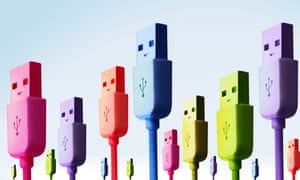In a
connected world, marketers must use content to provide great experiences for
people instead of just being a way to deliver advertising messages

Content in a connected world of things has
endless possibilities.
The idea of
content is changing. It’s no longer just about videos, social posts and
websites. Our fridges, washing machines and watches are serving us recipes,
news, entertainment and advice. It’s all part of a new, encompassing, connected
world – the internet of things (IoT).
IoT is a
complex, adaptive performance of ideas and information – content – perfectly
choreographed with our behaviours. What we want, where we want it, on whatever
device is within reach.
Brands are
racing to understand what this means for how they talk to customers. These new
touchpoints require rethinking how content can work for these new screens in
our homes, on our wrists and in places we haven’t even thought of yet.
While
content strategy is part of a bigger process spanning technology, industrial
engineering and experience design, understanding the role it can play is
critical to success within IoT.
After all,
the goal is to deliver relevant content in the right contexts.
Experience-first
thinking
Content
strategists usually plan the content that drives websites, apps and brands.
Now, they are finding themselves in teams designing systems where hardware,
human habits and physical spaces intertwine.
Alongside
experience designers and creatives, content strategists are an important part
of defining how content powers and populates these ever-evolving networks of
connected things.
Does
entertainment news only belong on the TV and recipes on the fridge? How should
content respond to people’s behaviours? How does it adapt to different
touchpoints?
As IoT
systems get bigger and more complex, content strategists will also be a part of
exploring the physical influence content can have over a connected space. Setting
a room light to blink when a piece of content is most relevant, for example.
When it
comes to IoT, we’re really coordinating something bigger than just a network of
content – we’re building rich, lived experiences. This means we need to define
the experience before we burrow into the technology, interfaces and content.
Experience-first
thinking also illustrates how important content strategy is to the mechanics of
ideas, information and behaviours we encounter in the connected world.
Innovative,
insightful content marketing
Every day,
businesses ask about IoT and what it means for their brands. Part of this is
exploring what it means for content marketing and native advertising
initiatives.
As we’ve
seen with products like Nike+, brands can innovate their way into people’s
daily routines. In the same way, to market within IoT, you need to find ways to
enrich lives in exciting and valuable ways. After all, most people won’t want
ads appearing on their expensive fridges.
The same
principles apply to content marketing in connected spaces.
A precise
understanding of where, when and how your brand should appear illuminates the
right opportunities and ensures you emerge in sensible, welcome ways.
This also
involves a layer of innovation: what are the latent or subconscious needs of
your customers and how can you create something wonderful to satisfy them?
If we take
the time to understand these things, there is unlimited potential to create a
connected experience that does for content marketing what Nike+ did for mobile,
apps and sports marketing.
Rule of
thumb: build the right teams and don’t skimp on strategic thinking. Valuable
content built around rigorous customer insights is the difference between Red
Bull and preloading a U2 album.
Start with
insights, finish with experiences
To make
sure IoT-delivered experiences are meaningful and useful, we must take the time
to carefully understand the role that real-time, personalised and poignant
content can have. And part of this is defining how it’s made, maintained, and
served – in other words, content strategy.
While
content strategists can’t do this on their own, their traditional skills around
change management, publishing and taxonomy design are valuable parts of
building these experiences.
When it
comes to connected content marketing, everything needs to start with careful
insights and a strategy built around what people actually want – not simply
what your brand wants to say.
Content in
a connected world of things has endless possibilities. It can grow, change,
adapt and connect with people in seemingly impossible ways. The best way to
unlock this potential is to involve smart content thinkers.
No comments:
Post a Comment